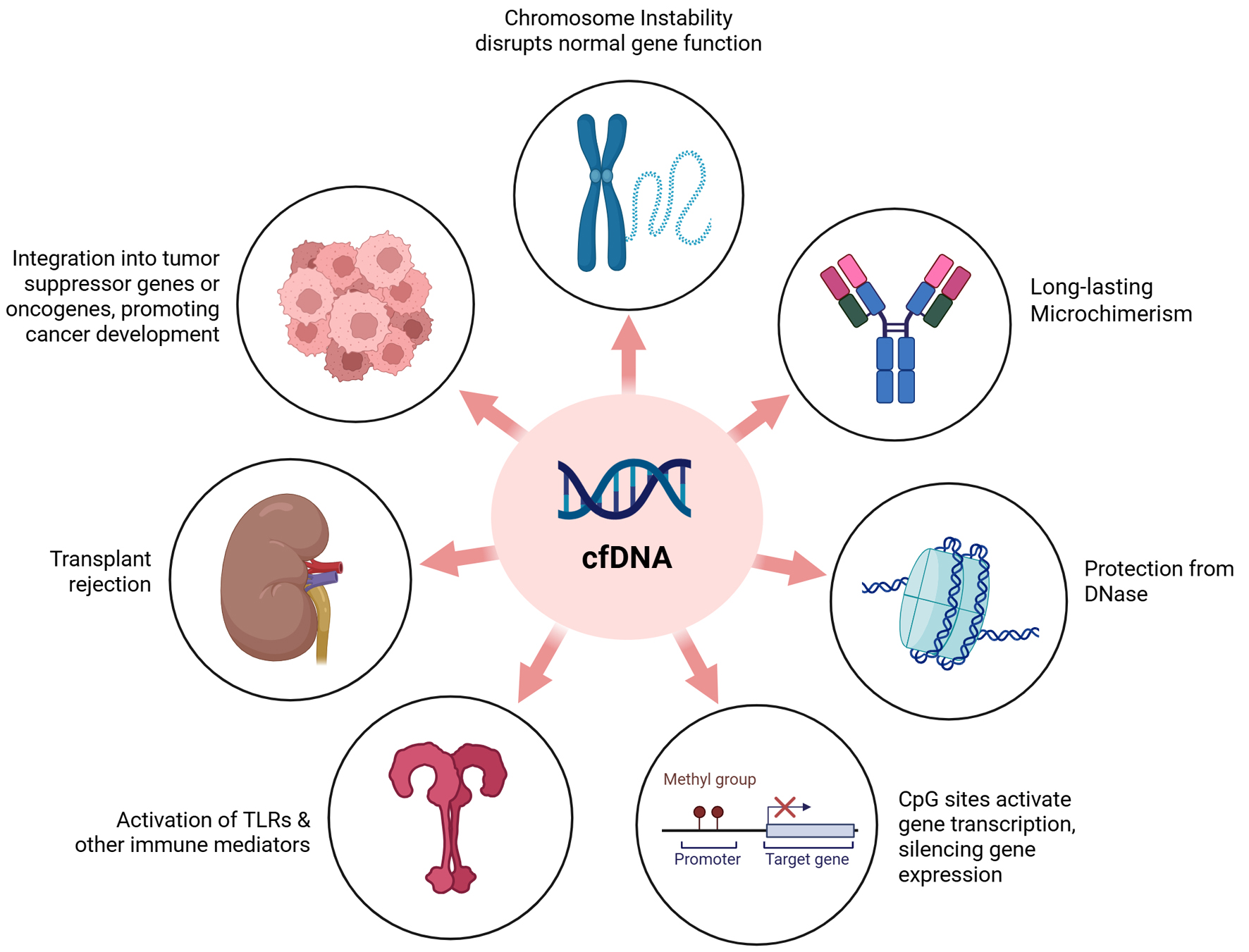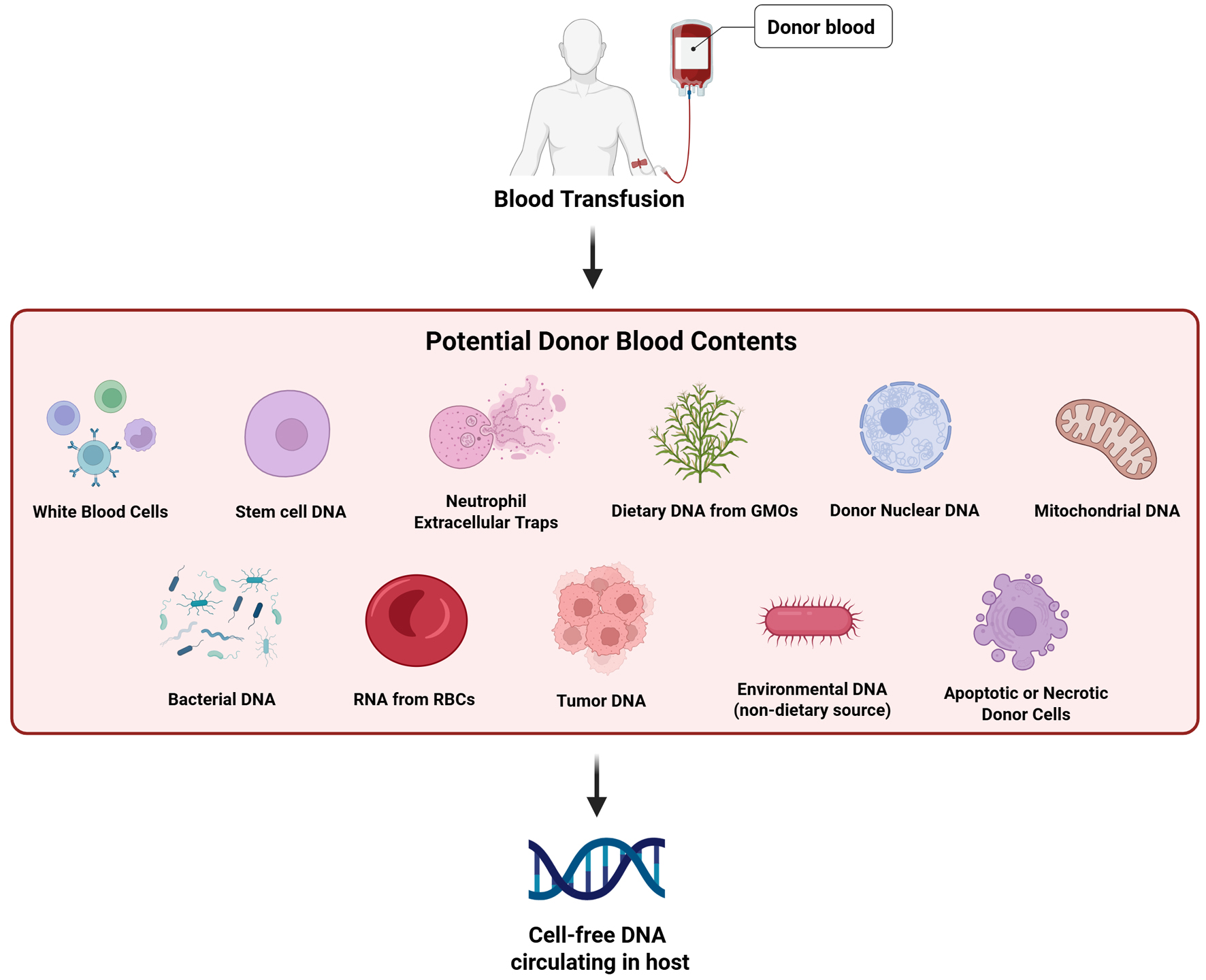
Figure 1. Theorized effects of cfDNA on the transfusion recipient. The impact of transfused cfDNA on the recipient may vary widely depending on factors such as cfDNA concentration, the recipient’s genomic background and lifestyle, and the cellular origin of the cfDNA. It is hypothesized that cfDNA bound to histones may evade DNase degradation and potentially integrate into the host genome. This integration could influence gene regulation by promoting transcriptional activation or silencing. cfDNA has also been associated with genomic instability in theoretical models. If not effectively cleared by the immune system, donor cfDNA may contribute to enhanced immune activation, potentially triggering responses linked to transplant rejection or the activation of pathways involving tumor suppressor genes, oncogenes, or Toll-like receptors. cfDNA: cell-free DNA; CpG: cytosine-phosphate-guanine; TLR: Toll-like receptor.
